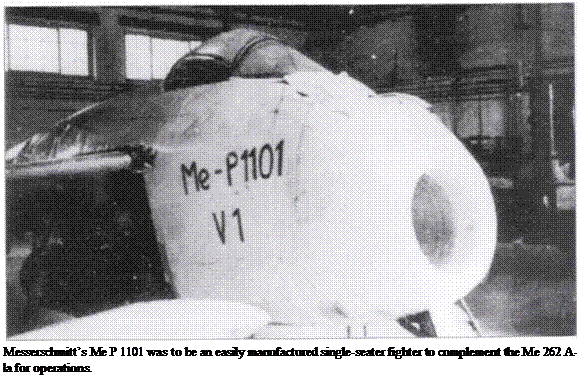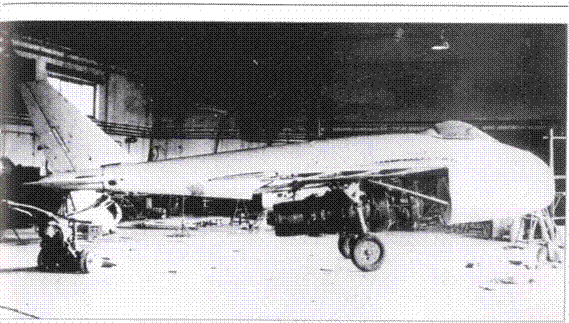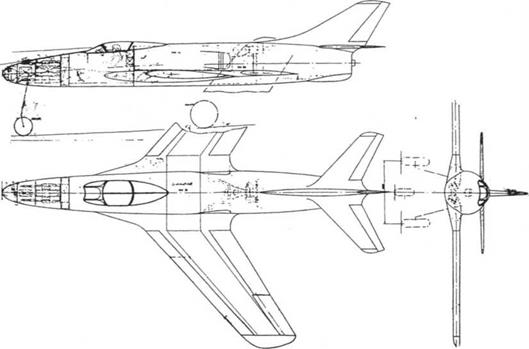Me PI 101

Plans to regain air supremacy by the use of modern fighter aircraft were drawn up at Messerschmitt Augsburg and later Oberammergau. The Messerschmitt

works had been relocated in a bombproof subterranean gallery near the abandoned Gebirgsjager barracks not far from the latter market town. At Augsburg the main factory was increasingly targeted by Allied bombers. Me PI 101 project was conceived in the summer of 1944. A simple method of construction with easily obtained materials was sought. All machines were required to have excellent flight characteristics and be capable of a short take-off. OKL had also demanded good armament and easy maintenance in the field. By October 1944 the planned machine had been wind-tunnel tested intensively with various wing configurations. After the construction of several prototypes, these would then be tried out with two MK 108s. Turbine was to be either a Jumo 004B or HeS Oil. Take-off from even small runways would be rocket – assisted. The Me PI 101 was offered to the Rustungsstab as a fighter-bomber, interceptor and all-weather aircraft.
The first rig, Me Pi 101 V-l, on which Me 262 A-la outer wing sections were used, had its wings swept back 40 degrees. The second set of wings was manufactured in February in the Autobahn tunnel at Leonberg, and tests could only be carried out on the ground, not during flight because the behaviour of variable wing geometries remained to be determined.
In February work proceeded intensively to prepare for Me PI 101 series production, the basic planning being concluded on 22 February 1945. Development was continued in the Upper Bavarian Research Institute at
![]()
|
|
The Messerschmitt Me P 1110 was a futuristic design for a single-seat jet fighter with single HeS Oil turbine and outstanding armament.
Oberammergau. The final modifications in March 1945 involved improved control surfaces, completing the equipment and armament, and preparing the first series run of the single-seater.
When work on the prototype was close to completion and a mock-up of an HeS Oil powerplant had been installed, the machine was damaged, or possibly sabotaged, by marauding forced labourers or Messerschmitt personnel. Lodged finally in Hall 615, on 7 May 1945 it came under the scrutiny of American experts. On 21 May 1945, 85 men of the Bell Corporations field team arrived. The documentation was found by British, French and American military and scientific teams and confiscated. Later the Bell Corporation turned out two experimental aircraft (X-5) based on the Me Pi 101, trials of which continued into the early 1950s.











